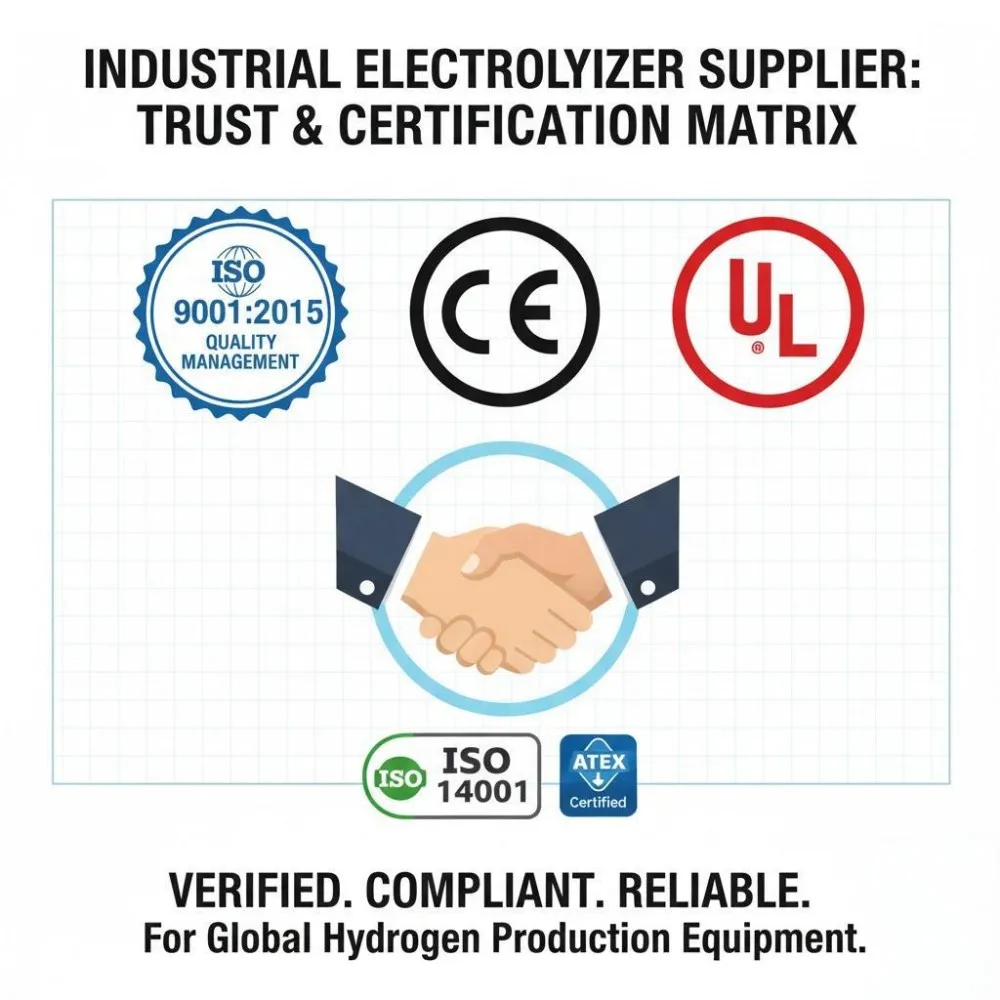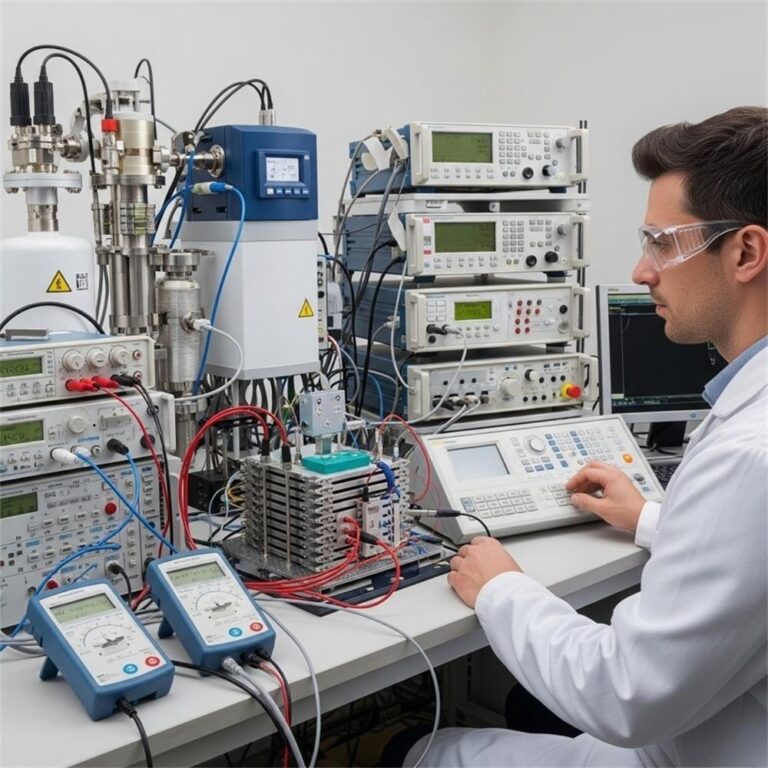Curious about green hydrogen? Discover how do PEM electrolyzer work, including their process, components, benefits, and role in the hydrogen economy in this in-depth guide.
What Is a PEM Electrolyzer and Why It Matters
In today’s world, clean energy isn’t just a dream—it’s a global priority. Among the many technologies making waves in this space, PEM electrolyzers are leading the charge. These high-tech machines split water into hydrogen and oxygen using electricity. Sounds simple, right? But the process is both fascinating and vital for a sustainable future.
PEM, or Proton Exchange Membrane, electrolyzers produce green hydrogen—a clean fuel with zero carbon emissions. From powering vehicles to storing renewable energy, the role of PEM electrolyzers is only growing. Let’s dive deep into the heart of this innovative tech and discover what makes it so special.

How do PEM electrolyzer work?
So, how do PEM electrolyzer work? At their core, these machines use electricity to break down water (H₂O) into hydrogen (H₂) and oxygen (O₂). They do this with the help of a Proton Exchange Membrane—a special material that allows only protons to pass through while blocking gases like oxygen.
Here’s the simplified breakdown:
- Water enters the system at the anode side.
- An electrical current is applied.
- At the anode, water splits into oxygen, electrons, and hydrogen ions (protons).
- The electrons flow through an external circuit, creating usable electric power.
- The protons travel through the membrane to the cathode side.
- There, they combine with electrons to form pure hydrogen gas.
The result? Clean, compressed hydrogen ready for use in fuel cells, industries, or storage systems.
Breaking Down PEM: Proton Exchange Membrane Basics
The Proton Exchange Membrane is the star of the show. It’s a thin film made from a special polymer that conducts protons but blocks gases. This allows for efficient, clean hydrogen production with minimal cross-contamination. Thanks to this membrane, PEM electrolyzers can run at high current densities and react quickly to power changes—ideal for pairing with solar or wind energy.
The Science Behind Electrolysis in PEM Systems
Electrolysis is nothing new—it dates back centuries. But PEM electrolyzers use a modern spin. They operate at relatively low temperatures (around 50–80°C), which makes them safer and more adaptable.
During electrolysis, the water molecules break apart because of the electric current. This process is known as oxidation-reduction (redox). On the anode, oxidation produces oxygen and protons. On the cathode, reduction creates hydrogen. The PEM keeps the ions and electrons flowing to their right destinations.
How Hydrogen and Oxygen Are Separated
The separation process is precise. Oxygen forms at the anode and is vented safely out. Meanwhile, hydrogen forms at the cathode and is collected and stored. The PEM membrane ensures these gases don’t mix—something that could be dangerous.
This physical barrier plus smart engineering makes PEM systems safe, reliable, and scalable.
The Role of the Electrodes in PEM Electrolyzers
Electrodes do the heavy lifting. They’re coated with catalysts like platinum or iridium—precious metals that speed up the chemical reaction. These materials are expensive, but they’re vital for efficient operation. Without them, the electrolysis process would be too slow and wasteful.
Importance of Membrane and Catalyst Materials
The PEM membrane, often made from Nafion, is key to system performance. It must be durable, conductive, and resistant to chemical degradation. Meanwhile, catalyst choice affects efficiency and cost. Researchers are working on alternative materials to lower prices and improve durability.
Water Supply Systems in PEM Units
Pure water is essential. Tap water won’t do—it contains minerals and ions that can damage the system. Most PEM systems use deionized (DI) water or have built-in purification units. Constant water flow ensures even production and avoids overheating.
Role of Electricity and Power Sources
PEM electrolyzers need direct current (DC) power. They often get it from renewable sources like solar or wind. This makes the hydrogen “green.” Power control systems adjust the voltage and current to optimize performance and minimize energy waste.
Gas Handling and Separation Units
After production, hydrogen and oxygen need to be separated, cooled, and sometimes compressed. Gas management systems take care of this. These units monitor gas purity, pressure, and flow—ensuring the product meets industrial or fuel cell standards.
From Water to Hydrogen: PEM Electrolyzer Operation Step-by-Step
Here’s a simplified table showing the workflow:
| Step | Action |
|---|---|
| 1 | Water is fed into the anode chamber |
| 2 | Electricity splits water into H⁺, e⁻, and O₂ |
| 3 | Protons cross the membrane to the cathode |
| 4 | Electrons flow through external circuit |
| 5 | Hydrogen forms at cathode and is collected |
Every step is controlled and optimized for efficiency.
Voltage, Pressure, and Temperature Parameters Explained
PEM electrolyzers typically operate at 1.8 to 2.2 volts per cell, ambient pressure to 30 bar, and 50–80°C temperatures. These conditions strike a balance between performance and safety. Advanced systems can operate under high pressure to deliver hydrogen ready for storage or fuel use.
Efficiency Ratings of PEM Electrolyzers
PEM systems offer 60–70% efficiency, meaning 60–70% of input electrical energy is stored as chemical energy in hydrogen. Losses come from heat, resistance, and incomplete reactions. But as technology improves, these numbers are climbing.
PEM vs Alkaline Electrolyzers: What’s the Difference?
| Feature | PEM Electrolyzer | Alkaline Electrolyzer |
|---|---|---|
| Membrane | Proton Exchange | Liquid Electrolyte |
| Efficiency | Higher | Moderate |
| Startup Time | Fast | Slow |
| Size | Compact | Larger |
| Cost | Higher | Lower |
PEM systems are better for renewables, while alkaline units are used in legacy industrial setups.
Using PEM Electrolyzers in Industrial Hydrogen Production
Factories need reliable, high-purity hydrogen. PEM electrolyzers fit the bill. From steelmaking to ammonia production, they offer a clean alternative to natural gas-based hydrogen (aka grey hydrogen). This helps companies meet sustainability targets.
Role in Renewable Energy and Green Hydrogen Projects
PEM electrolyzers shine when paired with solar or wind farms. They convert surplus electricity into hydrogen, which can be stored and used later. This stabilizes the grid and maximizes clean energy use—even when the sun isn’t shining.
PEM Electrolyzers in Fuel Cell Vehicles
Fuel cell vehicles (FCVs) need hydrogen, and PEM units can provide it on-site. That’s a big plus for refueling stations. Instead of transporting hydrogen by truck, you generate it where it’s needed—cutting costs and emissions.
Off-Grid Applications and Backup Energy Systems
Remote areas and off-grid sites benefit from PEM electrolyzers. They work with microgrids to store energy as hydrogen. During blackouts, the hydrogen can power fuel cells and keep systems running smoothly.
Key Benefits of PEM Electrolyzer Technology
- High purity hydrogen
- Compact and flexible design
- Fast response time
- Scalable for different needs
- Perfect for green energy integration
Technical Challenges and Limitations
- High initial cost
- Catalyst material scarcity
- Water purity requirements
- Durability under constant use
Despite these, research is ongoing to overcome hurdles.
Longevity and Maintenance Needs
Most PEM units last 7 to 10 years, depending on usage and care. Regular maintenance includes water checks, membrane inspections, and cleaning. As the tech matures, lifespans will improve.
Advances in Membrane Technology for Better Efficiency
New materials like composite membranes and non-precious catalysts are in development. These could reduce costs by up to 50% while boosting efficiency. Innovation is the name of the game.
The Future of Hydrogen Economy with PEM Electrolyzers
PEM electrolyzers are poised to play a starring role in the global hydrogen economy. As demand for clean fuels grows, these devices will be central to powering everything from homes to planes.
Policy and Incentives Driving PEM Electrolyzer Adoption
Countries like Germany, Japan, and the U.S. offer subsidies, tax breaks, and grants for hydrogen projects. These incentives make it easier for businesses to adopt PEM systems and go green.
What Is the Lifespan of a PEM Electrolyzer?
Most PEM electrolyzers last 7–10 years, depending on usage and care. Regular maintenance can extend their life.
How Safe Are PEM Electrolyzers?
Very safe. With built-in sensors, pressure regulators, and gas purifiers, modern PEM units are designed to operate reliably under all conditions.
Can PEM Electrolyzers Be Used at Home?
Yes, but they’re still costly. Small-scale units exist for hobbyists and off-grid setups, though widespread home use is still rare.
How Much Energy Does a PEM Electrolyzer Consume?
Roughly 50–55 kWh per kilogram of hydrogen produced, depending on system efficiency and pressure settings.
What Type of Water Is Best for PEM Electrolyzers?
Only pure deionized (DI) water. Impure water can damage the membrane and reduce efficiency.
Are PEM Electrolyzers Environmentally Friendly?
Absolutely. When powered by renewable electricity, they produce zero emissions and help reduce dependence on fossil fuels.
Final Thoughts on How PEM Electrolyzers Work
PEM electrolyzers represent a powerful step toward a sustainable future. By efficiently converting water into clean hydrogen, they pave the way for a cleaner, greener world. Whether for industry, transport, or energy storage, these systems are ready to power the hydrogen revolution.
✅ Learn more about green hydrogen systems at heletitaniumhydrogen.com.







